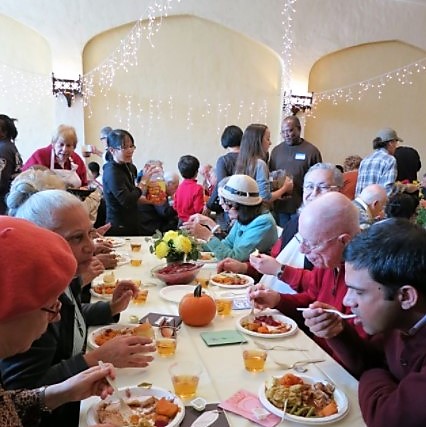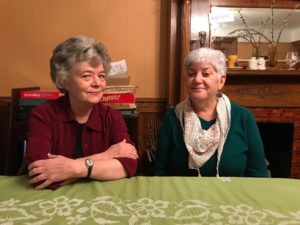
From the outside looking in, Park Slope appears to be a neighborhood teeming with babies in strollers. However, 10 percent of the population is comprised of older adults, people 65 and over, who have called this serene neighborhood home for more than thirty years.
As an AARP study reports, “nearly 90 percent of people over age 65 want to stay in their home for as long as possible, and 80 percent believe their current residence is where they will always live.” These findings ring true for many older adults in Park Slope. And they certainly ring true for one local resident, Andi Peretz. She is able to stay in her home on 8th Street thanks in part to a local non-profit organization known as “Good Neighbors of Park Slope,” where she volunteers as the Membership Director. After she suffered a personal loss, a group of friends surprised Peretz at her house with a potluck dinner. Peretz’s support system is a testament to the social network she built through the organization. “Good Neighbors aims to improve the quality of life of its members through social interaction, making new friends, and finding support,” Peretz said. The organization gave Peretz a sense of purpose, she says, and something to look forward to every day.

Over the years, various organizations and initiatives have developed in Park Slope to help older adults live independently in their communities and homes, a concept also known as “aging in place.” In 2014, a group of neighbors developed an idea for a network aimed at helping one another age in place—seniors helping seniors. That idea ultimately blossomed into Good Neighbors of Park Slope.
After a year or so of planning, Good Neighbors was ready for liftoff. “It was the first cold, rainy night of October 2015,” Peretz said. “We had about 125 people show up just by word of mouth—no advertising, fliers, or brochures.” The launch party resembled a reunion. There were attendees who had not seen each other since their children were in grade school, and even former colleagues who did not know they lived just blocks away from each other.
Since then, Good Neighbors of Park Slope has grown into a network of more than 550 members. The organization focuses on two key objectives. The first is social—bringing people together through activities, sharing community resources, and providing a space for advocacy. “At the night of the launch party, people expressed interest in wanting somebody to go out to breakfast with, somebody to play bridge with, somebody to go folk singing with—everybody had different needs,” Peretz said.
With more than 65 member-initiated events per month, Good Neighbors encourages its members to lead activities they are passionate about.

Good Neighbors of Park Slope is also working towards its second objective—providing services for individuals who need assistance. According to Linda Brown, one of the organization’s board members, the second objective consists of traditional services like providing transportation to appointments and initiating daily phone calls to check-in on members that live alone, among other programs. These services are projected to launch in 2018.
Members of Good Neighbors say the organization has been a transformative experience in their lives. “It allowed me to take part in building a positive community where people look out for each other,” Brown said. “And now when I go out to the store or do anything in the neighborhood, I know 50 people I did not know before, which is astonishing given everything they say about your social circle shrinking as you grow older.”
Volunteer-run organizations, such as Good Neighbors of Park Slope, are not the only groups working towards helping older adults age in place. In fact, some state-funded organizations strive to meet this need as well.
In July 2015, Heights and Hills assumed sponsorship of a senior center and transformed it into the Park Slope Center for Successful Aging. “When we took over, we stopped calling it a senior center and started calling it a community center for people 60 and better,” said Judy Willig, the organization’s Executive Director.

According to Willig, developing and maintaining social connections is a major facet of aging successfully. The Science Daily recently reported on a study by Brigham Young University indicating that “loneliness and social isolation may represent a greater public health hazard than obesity.” The Center strives to fight this growing epidemic by offering its community of 400 members several opportunities to build social connections, through activities like Tai Chi, yoga, and digital photography.
The Center also hosts some member-initiated classes. “We have a member originally from Peru who has been teaching a Quechua class for a number of years,” Willig said. “Quechua is an ancient language spoken in Peru and she wants to try and preserve the language, so she teaches that class.”
Part of helping older adults live their best lives involves getting the community at large on board. In 2016, Heights and Hills, the Park Slope Center for Successful Aging, and Good Neighbors of Park Slope united to launch “Age Friendly Park Slope.” This project identified more than 60 local businesses in Park Slope who exemplified “age friendly practices.” Best practices included providing places for older customers to sit and rest, having good lighting, and placing products in easy-access locations, among other things.


Leave a Reply